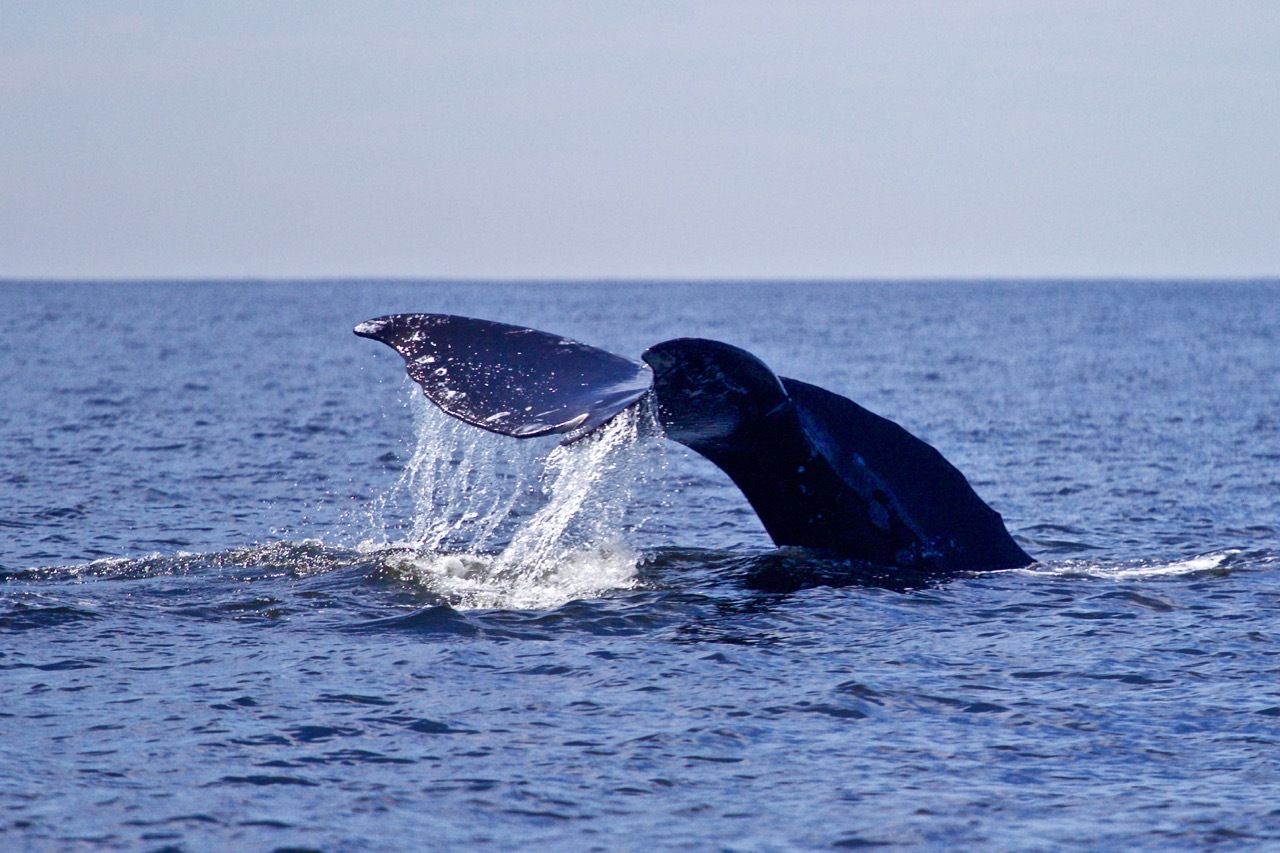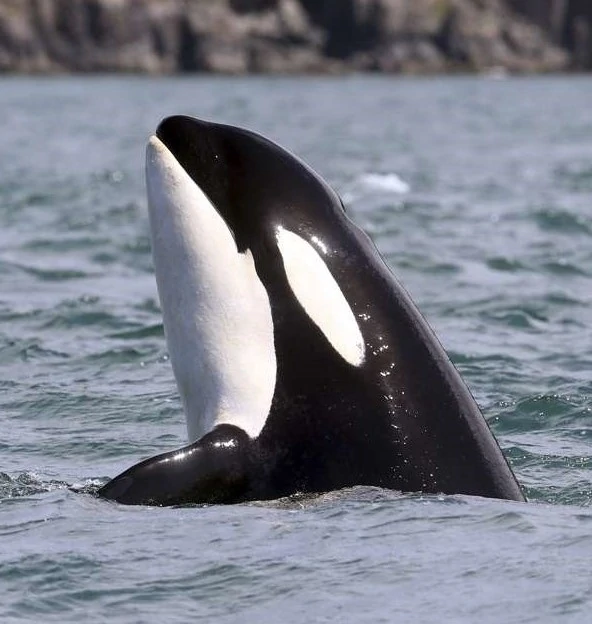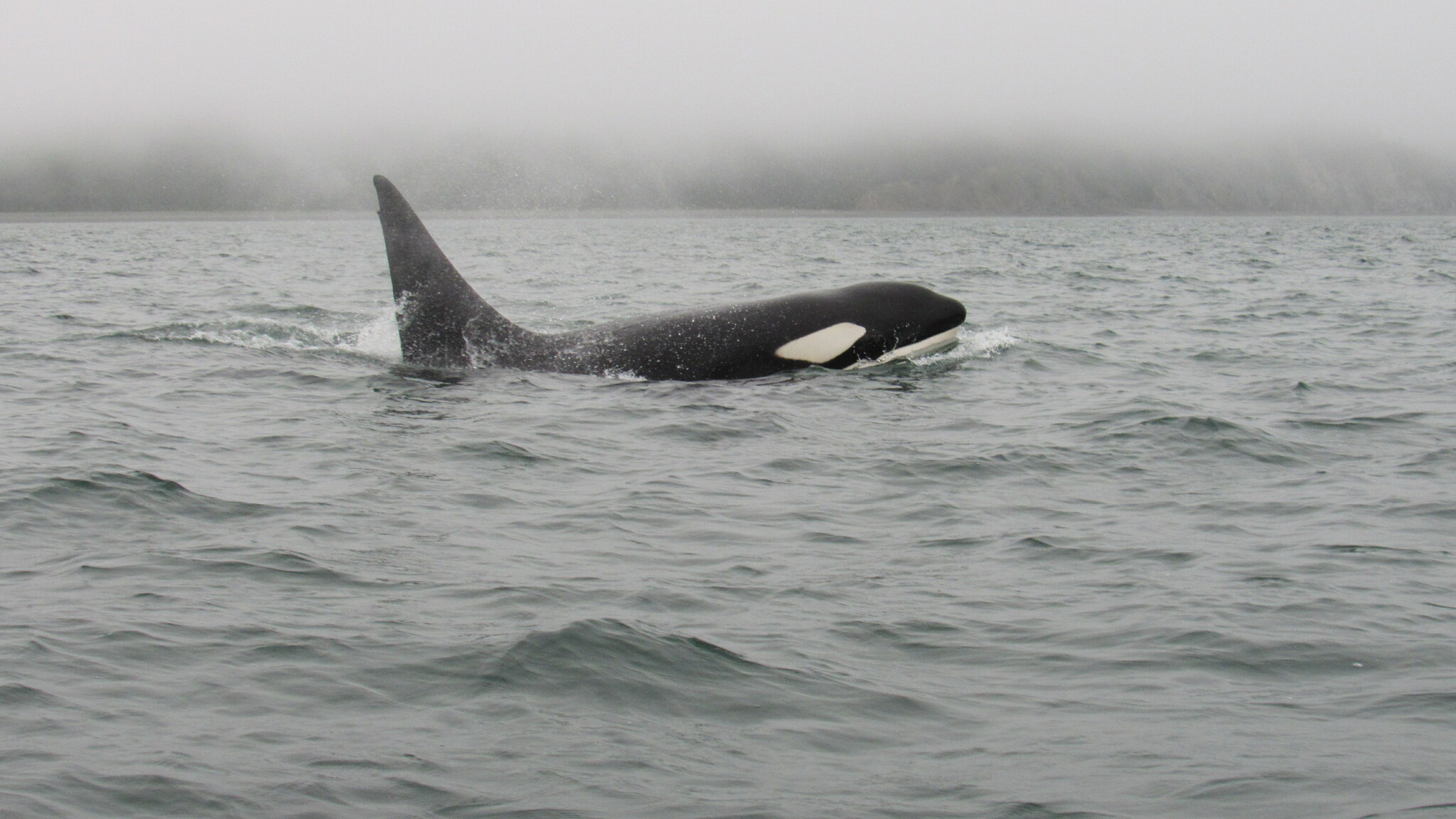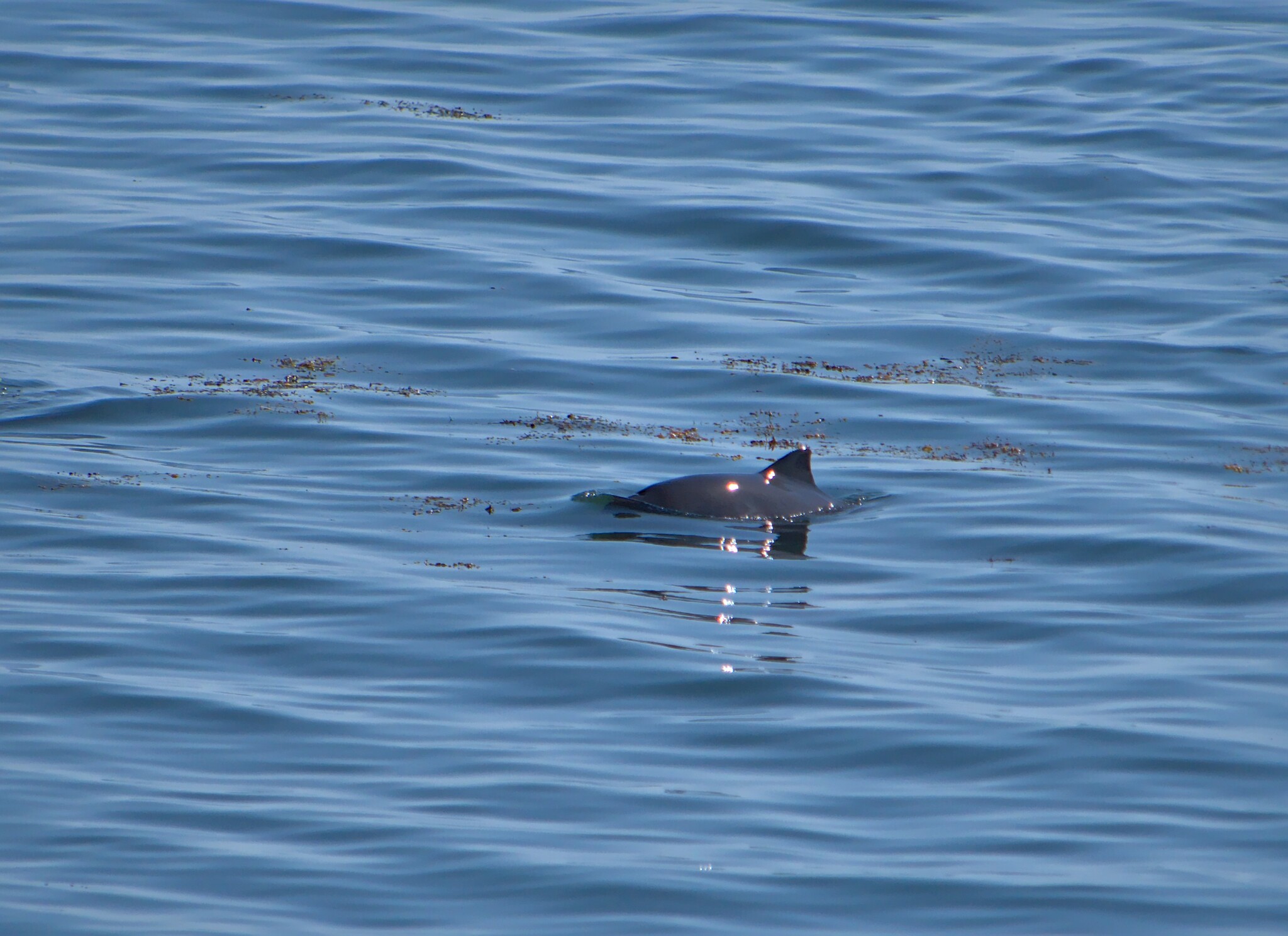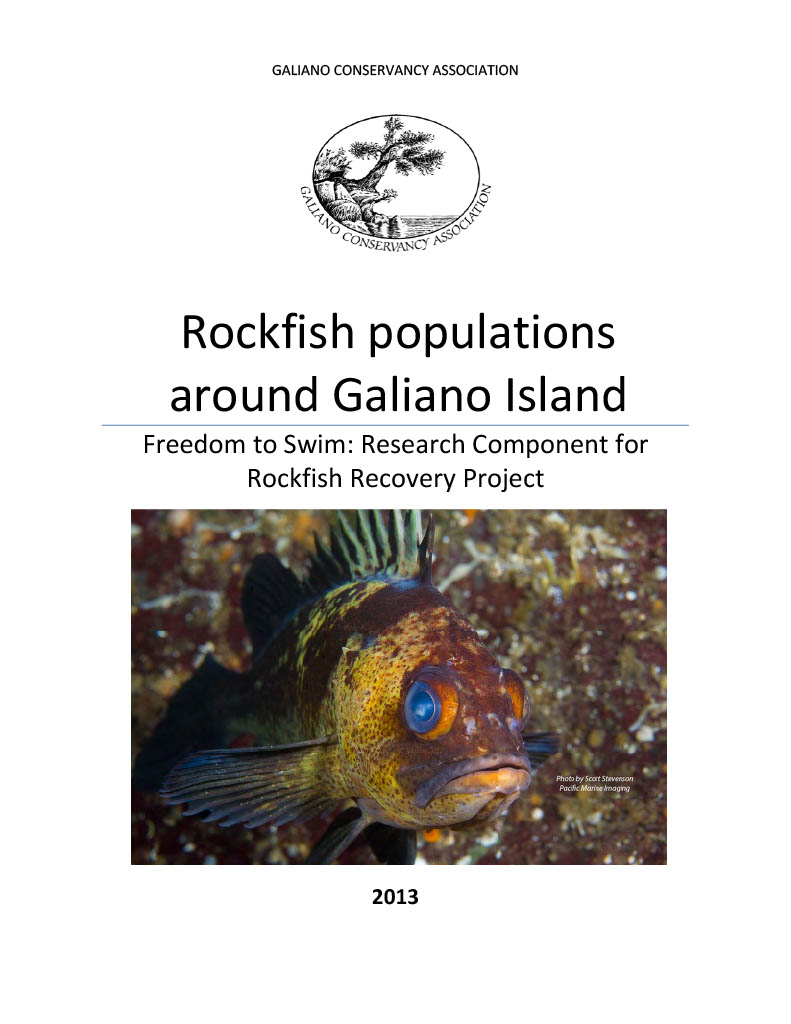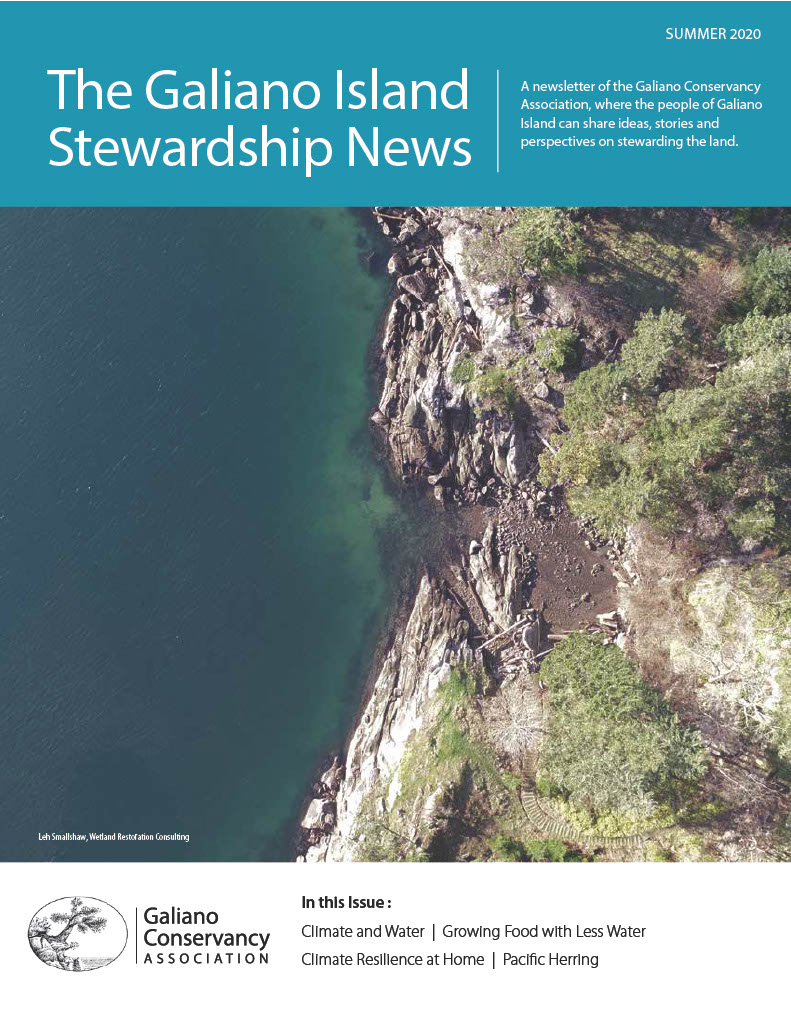Orca
Orcinus orca
Read MoreOrca (Orcinus orca)
Resources
Status
- BC: Red – S1S2 (2021)
- COSEWIC: Endangered / Threatened
- SARA: Endangered / Threatened (2003)
- Global: Apparently Secure
Description
Orcas, or killer whales (the names are interchangeable), are found throughout the world’s oceans, and after humans, are the second most widespread mammal on Earth. Interestingly, orcas are often referred to as whales, however, they are actually from the family Delphinidae, making them dolphins! Although all technically the same species (Orcinus orca), there are numerous distinct populations, or ‘ecotypes’ of killer whales globally that can be distinguished from other ecotypes by their diet, morphology, and culture. That’s right, culture! Biologists are now expanding the definition of culture (socially transmitted behaviours) to include other animal groups than just humans.
There are three orca ecotypes living off BC’s coast: Offshore Killer Whales, Transient Killer Whales and Resident Killer Whales. At first glance, all three ecotypes looks very similar. However, it is very possible to tell them apart. Ecotypes can be distinguished by both the shape of their dorsal fin as well as the pattern of their saddle patch, the white coloration on their backs just behind their dorsal fin. With a fine-tuned eye, some people can even identify individual whales based on these patterns. Like the name implies, offshore killer whales are rarely sighted near land, and as a result, are less studied than other ecotypes. Transient, or Bigg’s Killer Whales are mammal hunters, and forage broadly up and down the Pacific Northwest coast, preying on seals, sea lions, and other whales. In fact, the observations by sailors of groups of orcas hunting larger whales earned them the name “whale killer”, which later became “killer whale”. In contrast to transients, resident killer whales hunt only fish, with their preferred prey being Chinook salmon. The suspected reason for this being that Chinook salmon are typically large, have a high fat content, and persist year-round in coastal waters. Orcas pass their culture (e.g., foraging strategies, dialects, and dietary preferences) on to younger generations by living in tight-knit family groups. Among resident orcas, these family groups are called matrilines and consist of a head female, her offspring, and her daughters’ offspring, which all stay together for life.
Male and female orcas are dimorphic, meaning they look different from each other. The males are much bigger, and have a long, slightly forward slanting dorsal fin, with a wavy back edge. The females are smaller and have a dorsal fin with a more rounded top.
Range
Resident orcas are subdivided into two geographically distinct breeding populations: Northern Resident Killer Whales, which typically range from mid Vancouver Island to Haida Gwaii and Southern Alaska, and Southern Resident Killer Whales (SRKW) which live primarily in the Salish Sea, but range from northern California to as far north as Haida Gwaii. There are three pods that make up the Southern Resident population: J pod, K pod, and L pod. Each pod consists of several matrilines.
Threats
We have no historic data about the size of the Southern Resident Orca population before the 1960s, however most researchers estimate there were likely 150-200 individuals at the start of the 20th century. Perceptions of these marine mammals were very different in the early 1900s. People thought they were dangerous, and many fishermen saw them as competition. This resulted in the establishment of culling programs, and it became the norm to shoot guns at the whales in order to either kill them or shoo them away. The situation became more critical in the late 1960s and early 1970s, when 49 whales were captured for the aquarium trade. As socially organized animals the consequences of such actions were great, family units were disrupted, potentially impacting the transmission of culture, and leaving mothers mourning for their calves. Populations have been fluctuating ever since, but have been very low for the last couple of decades. The Southern Resident Orca population is listed as endangered by the Committee of Endangered Wildlife in Canada (COSEWIC), and after the loss of L41 (also known as Mega), who was last seen in August 2019, we currently have the smallest population since 1973, consisting of 72 individuals.
Although the aquarium trade was responsible for the most dramatic SRKW population decline, there are now many new factors preventing their population recovery. Current threats are extensive, and include persistent organic pollutants (POPs), chemical pollutants, bacteria, exotic species, physical and acoustic disturbance through increased vessel traffic, oil spills, entanglement, and most critically, low Chinook salmon stocks.
Providing >80% of their diet, the main food source of the Southern Resident Orcas is Chinook Salmon. The other portion is largely made up of Chum Salmon. Critical habitat for these salmon are eelgrass meadows and kelp beds off our coasts. Eelgrass meadows grow in shallow waters from the intertidal down to 7 m depth, while kelp beds lie somewhat deeper, down to 17 m. As coastal ecosystems, both are very susceptible to negative human impacts such as coastal development, excess sedimentation, pollution, and climate change. Eelgrass can also be damaged through trampling and dragging of boat anchors, while kelp is susceptible to threats of its own, including propeller damage, over-harvesting, and sea urchins overgrazing (often caused by excessive human consumption of urchin predators, like sea otters).
Galiano Status
Both resident and transient orcas are frequently sighted in the waters around Galiano Island.
